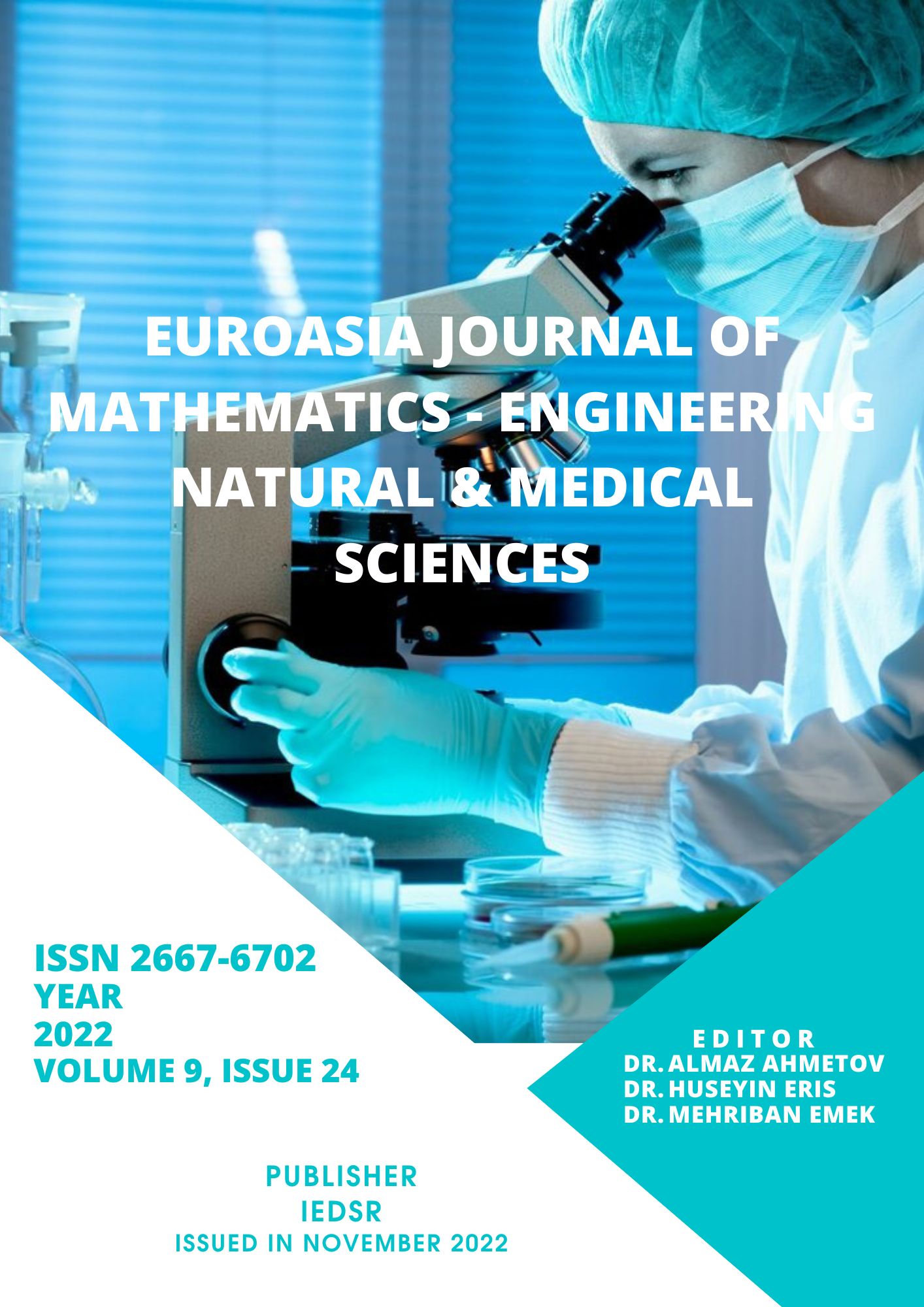Analysis of Unplanned Postoperative Intensive Care Unit Admissions Before and During Covid-19 Outbreak
DOI:
https://doi.org/10.5281/zenodo.7364815Anahtar Kelimeler:
COVID-19, ICU, unplanned ICU admissions, gynecologyÖzet
Unplanned Intensive Care Unit (ICU) admission is associated with a negative outcome and is a surrogate marker for patient safety and a quality indicator.
To investigate the outcomes of the unplanned ICU admission in gynecologic and obstetric patients before and during the COVID-19 pandemic.
This is a retrospective cohort study conducted on patients who transferred to the ICU from non-ICU units at a tertiary hospital, from March 1, 2012 to 2022.
Demographic features, triage classifications, diagnosis on admission and outcome of the ICU, presence of comorbidities and past surgical history, ASA physical status, type of elective anesthesia, post-operative complications, details of treatment given such as blood transfusion, ionotropic support, and dialysis were reviewed.
A total of 66 unplanned ICU admissions were identified, of whom 41 were before the COVID-19 pandemic, and the remaining 25 were during the COVID-19 pandemic. There was no difference in the need for infusion of inotropic and vasoactive drugs, the shift or day of the week the cases were in between the pre-pandemic and pandemic periods.
This study indicated that the characteristics and outcomes of patients who had unplanned ICU admissions from the gynecologic and obstetric department during the COVID-19 pandemic were broadly similar to the earlier period. Preeclampsia/eclampsia, low- risk pregnancy, and placenta accreata/percreata were clinical medical conditions more prevalent.
The characteristics and outcomes of patients who had unplanned ICU admissions from the obstetrics and gynecology department during the COVID-19 pandemic were similar to the pre-pandemic period.
Referanslar
Arts D, de Keizer N, Scheffer GJ, et al. Quality of data collectedforseverity of illnessscores in the Dutch National Intensive Care Evaluation (NICE) registry. Intensive Care Med. 2002; 28(5):656–9.
Aziz S, Arabi YM, Alhazzani W, et al. Managing ICU surge during the COVID-19 crisis: rapid guidelines. Intensive Care Med. 2020;46(7):1303–25.
Bruceta M, De Souza L, Carr ZJ, et al. Post-operative intensive care unit admission after elective non-cardiac surgery: A single-center analysis of the NSQIP database. Acta Anaesthesiol Scand. 2020;64(3):319-28.
European Center for Disease Prevention and Control. Guidance for health system contingency planning during widespread transmission of SARS-CoV-2 with high impact on health care services. 2020. https://www.ecdc.europa.eu/sites/default/files/documents/COVID-19-
guidance-health-systems-contingency-planning.pdf. Accessed 28 June 2022.
Fadiloglu E, Bulut Yuksel ND, Unal C, et al. Characteristics of obstetric admissions to intensive care unit: APACHE II, SOFA and the Glasgow Coma Scale. J Perinat Med. 2019;47(9):947-57.
Farzi F, Mirmansouri A, Atrkar Roshan Z, et al. Evaluation of admission indications, clinical character- istics and outcomes of obstetric patients admitted to the intensive care unit of a teaching hospital center: A five-year retrospective review. Anesth Pain Med. 2017;7(3):e13636.
Froylich D, Corcelles R, Davis M, et al. Factors associated with length of stay in intensive care after bariatric surgery. Surg Obes Relat Dis. 2016;12(7):1391-6.
Grasselli G, Pesenti A, Cecconi M. Critical care utilization for the COVID-19 outbreak in Lombardy, Italy: early experience and forecast during an emergency response. JAMA. 2020;323(16):1545–6.
Haller G, Myles PS, Langley M, et al. Assessment of an unplanned admission to the intensive care unit as a global safety indicator in surgical patients. Anaesth Intensive Care. 2008;36(2):190-200.
Haller G, Myles PS, Wolfe R, et al. Validity of unplanned admission to an Intensive Care Unit as a measure of patient safety in surgical patients. Anesthesiology. 2005;103:1121-9.
Leape LL, Brennan TA, Laird N, et al. Thenature of adverseevents in hospitalizedpatients. Results of the Harvard Medical Practice Study II. N Engl J Med. 1991; 324(6):377–84.
Lynn RM, Avis JL, Lenton S, et al. Delayed access to care and late presentations in children during the COVID-19 pandemic: a snapshot survey of 4075 paediatricians in the UK and Ireland. Arch Dis Child. 2021;106(2):e8–e8.
Piercy M, Lau S, Loh E, et al. Unplanned admission to the intensive care unit in postoperative patients–an indicator of quality of anaesthetic care? Anaesth Intens Care. 2006; 34:592–8.
Quinn TD, Gabriel RA, Dutton RP, et al. Analysis of Unplanned Postoperative Admissions to the Intensive Care Unit. J Intensive Care Med. 2015.
Ridley S, Jackson R, Findlay J, et al. Long term survival after intensive care. BMJ. 1990;301 (6761):1127–30.
Sperotto F, Wolfler A, Biban P, et al. Unplanned and medical admissions to pediatric intensive care units significantly decreased during COVID-19 outbreak in Northern Italy. Eur J Pediatr. 2021;180(2):643-48.
Verelst F, Kuylen E, Beutels P. Indications for healthcare surge capacity in European countries facing an exponential increase in coronavirus disease (COVID-19) cases, March 2020. Euro Surveill. 2020 doi: 10.2807/1560-7917.ES.2020.25.13.2000323.
Wang C, Horby PW, Hayden FG, et al. A novelcoro- navirusoutbreak of global healthconcern. Lancet. 2020;395(10223):470–3.
World Health Organization (WHO). https://covid19.who.int Accessed 28 June 2022a.
World Health Organization (WHO). https://www.who.int/publications/i/item/WHO-2019- nCoV-EHS-continuity-survey-2021.1 Accessed 28 June 2022b.
Wurmb T, Scholtes K, Kolibay F, et al. Hospital preparedness for mass criticalcare during SARS-CoV-2 pandemic. CritCare. 2020;24(1):386.
İndir
Yayınlanmış
Nasıl Atıf Yapılır
Sayı
Bölüm
Lisans
Telif Hakkı (c) 2022 Euroasia Journal of Mathematics, Engineering, Natural & Medical Sciences

Bu çalışma Creative Commons Attribution-NonCommercial 4.0 International License ile lisanslanmıştır.

